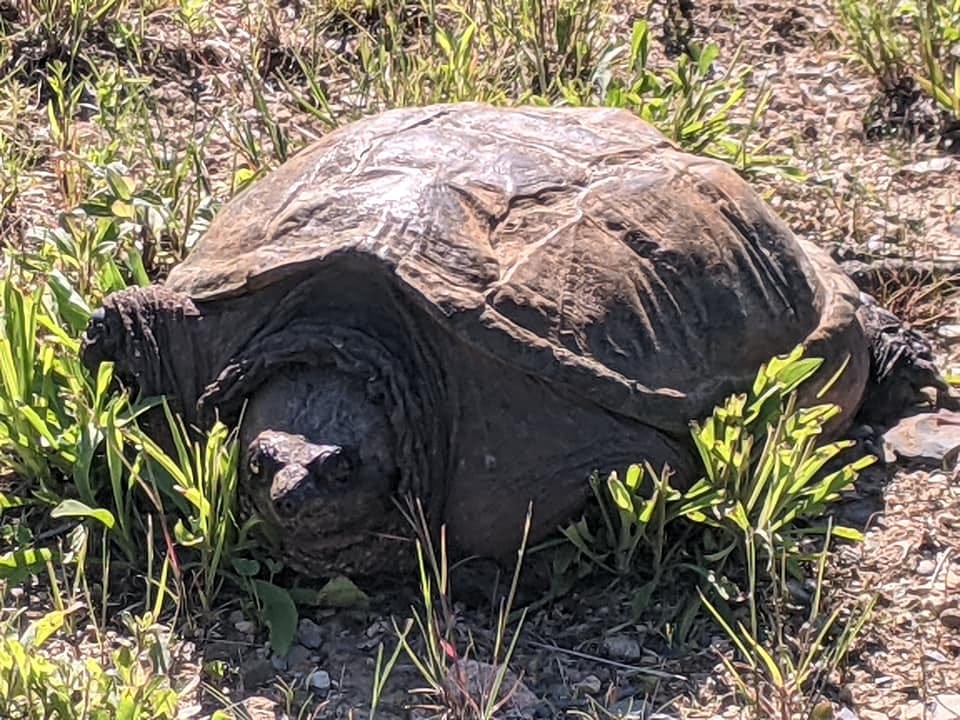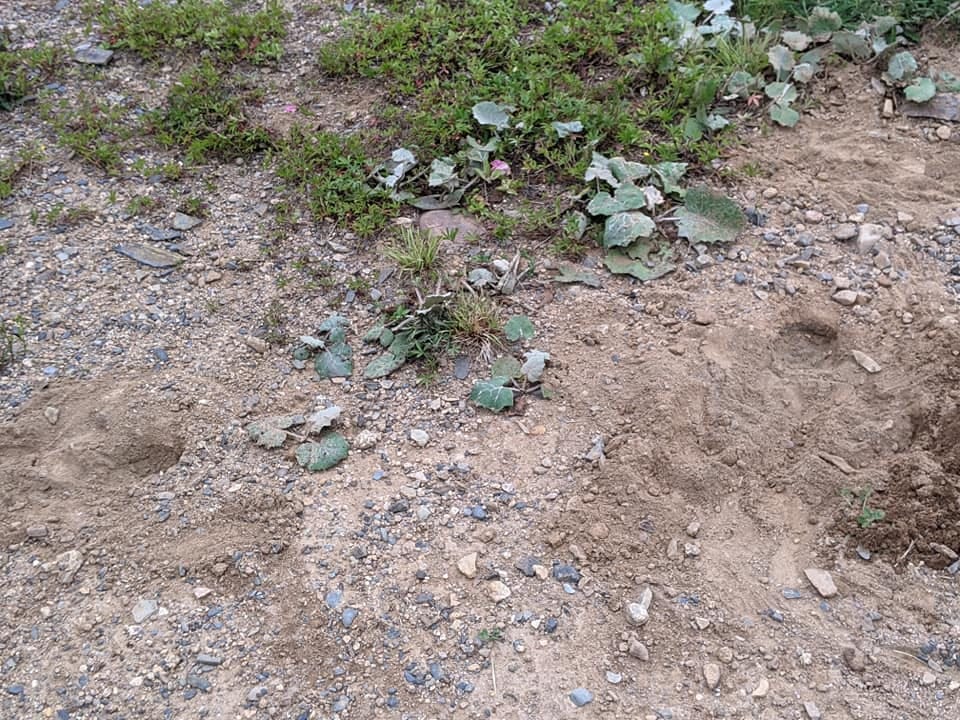The snapping turtle in search of a maternity ward. Mostly, I tried to leave her alone so she could be comfortable.
The other day I glanced out the window, and spotted what looked like a military helmet placed upon our front lawn. Approximately the size of a dinner plate, the motionless, grey-green helmet suddenly raised its head.
Over the course of the next two days the female snapping turtle lumbered around our yard looking for a place to lay its eggs.
She seemed particularly enamoured with our green sceptic tank covers, and dug repeated holes around them.
Perhaps she thought the covers were giant males of her species.
How you doing? Actually, it really isn’t Joey from Friends; she’s digging in, hoping it’s a good spot for her eggs.
It was a bit perplexing to see her in our yard. She was a good 250 metres from the brook out back, and we discussed the possibility of having to ferry the babies to the water if and when they were born.
Female snapping turtles use their formidable legs with their lengthy claws to scoop out the soil in preparation for egg-laying. If everything goes well, they will deposit 25 to 45 eggs in the ground, and cover them up. The eggs hatch roughly two months later.
The largest freshwater turtle in Canada, snapping turtles range from Saskatchewan to Nova Scotia. The Canadian Wildlife Federation reports that they live in shallow lakes, rivers, ponds, and wetlands with abundant vegetation, and a muddy bottom.
They nest in open areas in sand, soil or gravel, which would explain why this particular one was visiting our front yard. Even though, we’ve seeded the sandy soil with clover, much of it after our first year here is still patchy, and just right for turtle babies.
Some of the holes she dug in our yard.
Snapping turtles gain their names not from their ability to respond with a quick rejoinder, but rather because they will ferociously bite at threats. Unlike other turtles, snapping turtles cannot retract complete into their shells.
Observing the female in our yard, this appears to make them extra cautious. She’d advance, and then sink down into the ground, evidently aware she was in the open, and a potential target to predators.
Snapping turtles are considered to be of special concern, meaning they could become an endangered or threatened species.
Watching the turtle lurch across our yard was like witnessing a dinosaur. She rose up a good four inches on her legs, and extended her reptilian head, and then clomped over to whichever spot she favoured, and began to claw at the earth.
Jurassic Park!
Once she’d dug down, the turtle backed into the hole, and looked as if she was experiencing contractions. However, it doesn’t appear that she laid any eggs anywhere.
After two days of this, she was clearly fed up. She waddled over to a low fence at the perimeter of our yard, hauled herself up, and over, and with more speed than you would believe she was capable of, shambled her bulk back down to the brook.
I’m a bit glum that she didn’t bless us with her progeny, but her visit constituted a tremendous gift. Not many get to witness such a spectacle over the course of a couple of days.







Charles, I would like to reprint this article in the Blomidon Naturalists quarterly newsletter. What's your policy?
That is so cool. I think she might have been interested in the septic tank cover as a marker location ?
When I was a kid, a turtle laid eggs in the ground out back of the cottage near the lake & I made a circle of tape ribbon around that area to keep people away from there. When the eggs hatched the little turtles made their way to the lake, like radar. I don't think the mother actually leads them, they just know. Pretty cool.